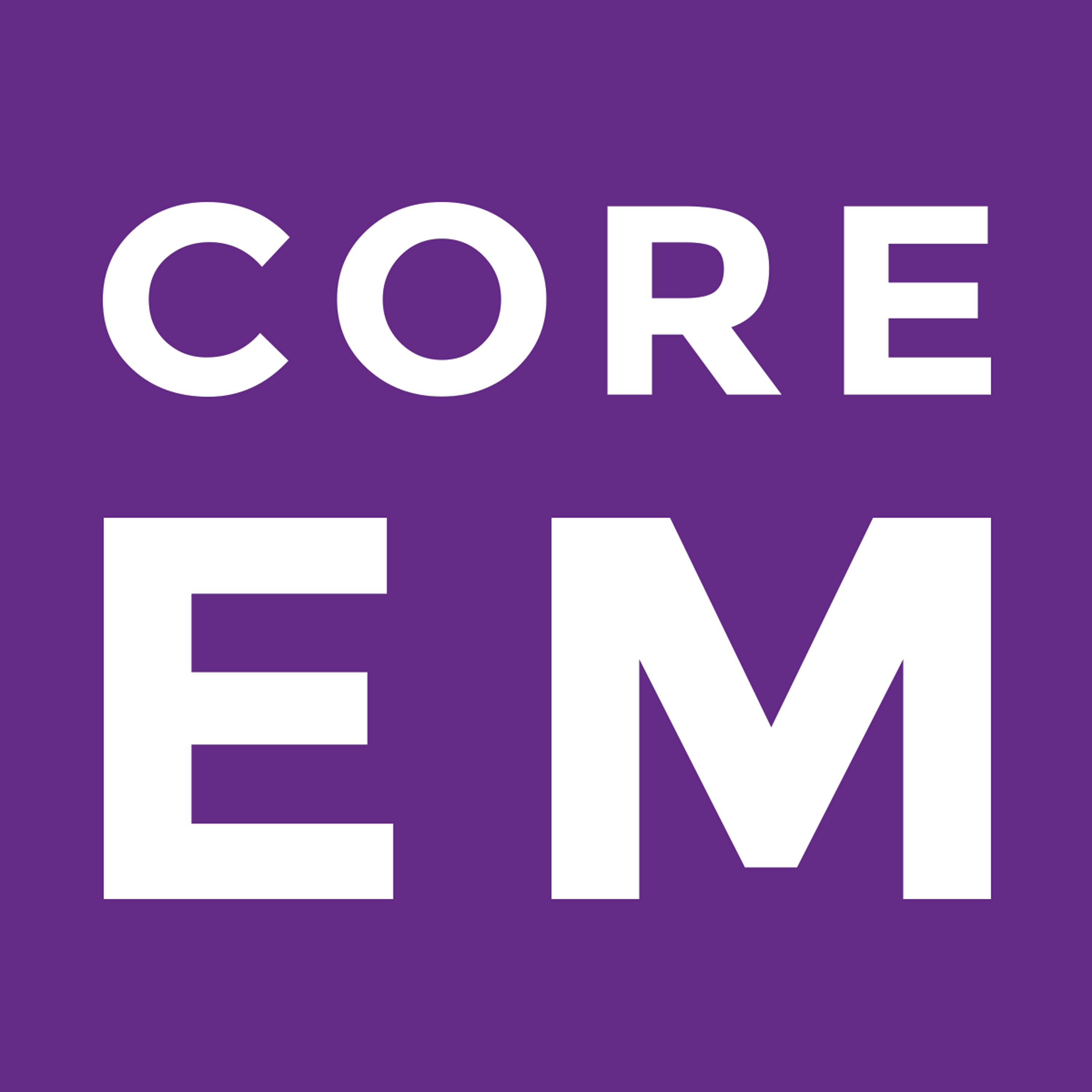

Core EM - Emergency Medicine Podcast
Core EM
Core EM Emergency Medicine Podcast
Episodes
Mentioned books

37 snips
May 1, 2024 • 0sec
Episode 196: The Critically Ill Infant
Exploring the challenges of treating critically ill infants in the emergency department, focusing on trauma considerations and anatomical vulnerabilities. Discussion on cyanotic congenital heart diseases with the 5 T's mnemonic. Delving into critical cardiac conditions, endocrine emergencies, inborn errors of metabolism, sepsis recognition, and intestinal catastrophes in infants.

10 snips
Apr 1, 2024 • 0sec
Episode 195: ARDS
Exploring the diagnostic criteria and severity levels of ARDS, differentiation from cardiogenic pulmonary edema, pathophysiology phases, etiology, and comprehensive management strategies including fluid management, steroids, oxygenation techniques, and mechanical ventilation goals. Advanced strategies discussed are salvage ventilation modes, prone positioning, inhaled pulmonary vasodilators, and VV ECMO for unresponsive cases.

15 snips
Mar 1, 2024 • 0sec
Episode 194: Nitrous Oxide Toxicity
Stefanie Biondi, a dedicated senior resident, shares her insights on the rising concern of nitrous oxide toxicity. She discusses a compelling case study of a young man whose symptoms escalated due to recreational use of the gas. The conversation dives into the misconceptions surrounding nitrous oxide, particularly its perceived safety. Additionally, Stefanie highlights the significant neurological consequences of frequent use and the critical need for awareness and early diagnosis to prevent long-term health issues.

19 snips
Feb 1, 2024 • 0sec
Episode 193: Threatened Abortion
Exploration of threatened abortion in early pregnancy, initial assessment priorities, broad differentials, diagnostic tests like HCG level and urinalysis, importance of interpreting HCG values, use of ultrasound imaging, patient counseling on prognosis and psychosocial support, and follow-up strategies for management.

6 snips
Jan 3, 2024 • 10min
Episode 192: Syncope in Children
The podcast discusses the approach to syncope in children, including initial workup similarities for children and adults, the rule of 50s for dextrose administration, and the importance of ECG analysis for diagnosing dysrhythmias. Topics covered include long QT syndrome, Brugada syndrome, and Wolff-Parkinson-White syndrome, emphasizing the need for a comprehensive evaluation and management in pediatric syncope cases.

38 snips
Dec 1, 2023 • 0sec
Episode 191: Rapid Atrial Fibrillation
The podcast discusses the treatment of rapid atrial fibrillation (afib with RVR) including stability assessment, ACLS protocols, rate vs. rhythm control strategies, limitations in chronic AF, and identifying pre-excitation syndromes. It explores the challenges and limitations of current treatments and emphasizes the importance of a thoughtful approach for patients with AFib and suspected critical illness.

8 snips
Nov 1, 2023 • 0sec
Episode 190: Electrical Storm
The podcast discusses Electrical Storm (VT storm) and the management of ventricular tachycardia. They explore the causes, diagnostic considerations, and importance of ECGs. They also discuss the management of unstable patients, including cardioversion and sedation options. The podcast explores different treatment options for ventricular arrhythmias in patients experiencing an electrical storm.

22 snips
Oct 1, 2023 • 0sec
Episode 189: Hyperkalemia 2.0
This podcast episode explores the topic of hyperkalemia, discussing its causes, symptoms, and associated EKG changes. It also covers various treatment strategies, including shifting agents and diuretics. The use of fluids, Lokelma, and dialysis in managing hyperkalemia is discussed, along with management strategies for severe cases and limited dialysis access.

40 snips
Sep 1, 2023 • 0sec
Episode 188: Vasopressors
Catherine Jamin, Associate professor of Emergency Medicine at NYU Langone Health, talks about the essential use of vasopressors in the ED to increase blood pressure, improve organ function, and optimize metabolic status. She discusses the commonly used vasopressors, their mechanisms, dosages, and situational preferences. The podcast also covers the diagnosis of underlying pathology, the use of vasopressin and phenylephrine, and the escalation strategy for refractory shock.

54 snips
Aug 1, 2023 • 9min
Episode 187: Septic Joint in Children
Explore the differential diagnosis of joint pain in children, distinguishing between transient synovitis and septic arthritis. Learn about the diagnostic work-up, including blood tests and imaging studies. Understand the management strategies for septic arthritis, such as joint drainage and targeted antibiotic therapy. Discover the organisms that cause septic joint in different age groups and the importance of prompt treatment to prevent complications.


